The cement industry has long relied on traditional grinding media, predominantly steel balls, for the milling processes in ball mills. However, this conventional method is increasingly becoming unsustainable due to the high energy demands and environmental regulations that are shaping the industry landscape. To adapt, cement manufacturers are turning to alternative solutions that promise to enhance efficiency, reduce costs, and improve product quality. Among these solutions, ceramic grinding media has emerged as a compelling option, offering significant advantages over steel balls. This article delves into the multifaceted benefits of ceramic balls in cement milling, focusing on their energy-saving potential, enhanced grinding effects, and overall contributions to sustainable practices in the industry.
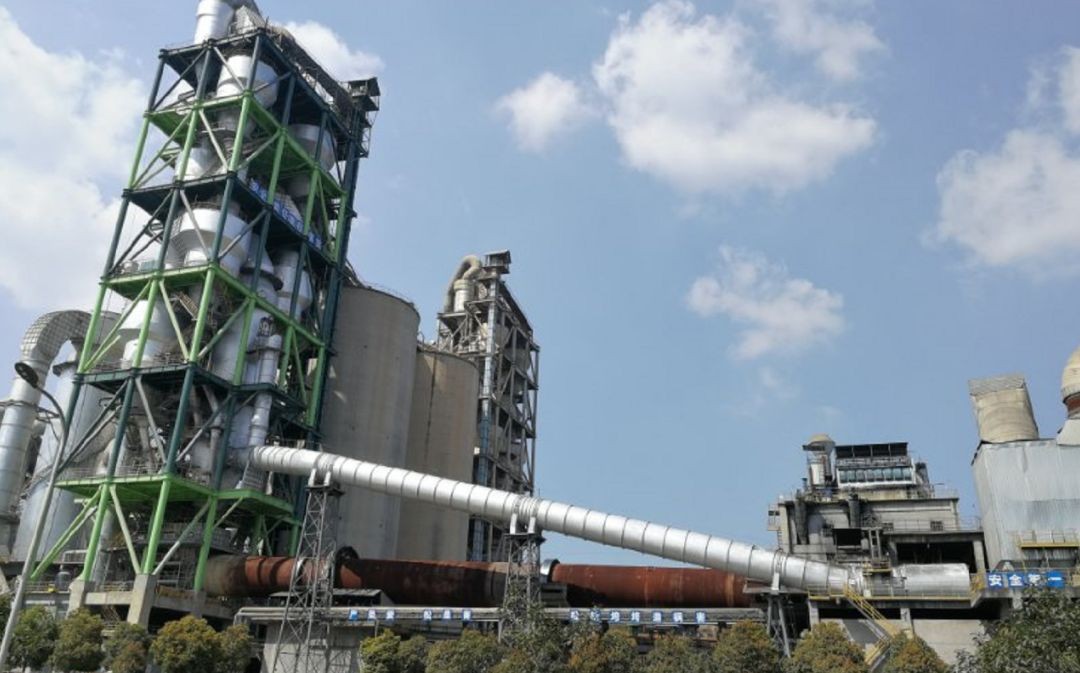
Before exploring the benefits of ceramic grinding media, it is essential to understand the challenges associated with traditional steel ball grinding:
High Energy Consumption: Steel balls necessitate considerable energy for grinding, often leading to inflated operational costs. The reliance on heavy motor power not only increases electricity bills but also contributes to a larger carbon footprint.
Over-Grinding Issues: Steel balls can lead to over-grinding of the cement, producing an undesirable particle size distribution. This can result in cement that lacks the necessary strength or has inconsistent quality, affecting the overall performance of construction materials.
Environmental Concerns: As environmental regulations tighten globally, the cement industry faces pressure to reduce emissions and waste. Steel balls contribute to metal pollution and environmental degradation, which are increasingly scrutinized by regulatory bodies.
Equipment Wear and Tear: The use of steel balls results in significant wear on milling equipment, leading to increased maintenance costs and downtime. This not only affects productivity but also impacts the longevity of the milling machinery.
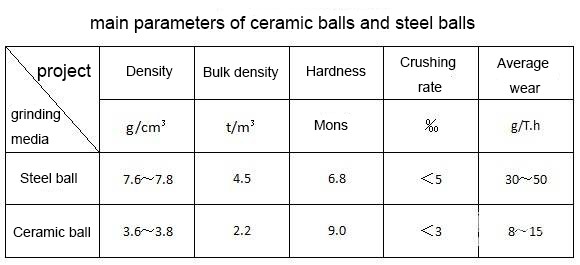
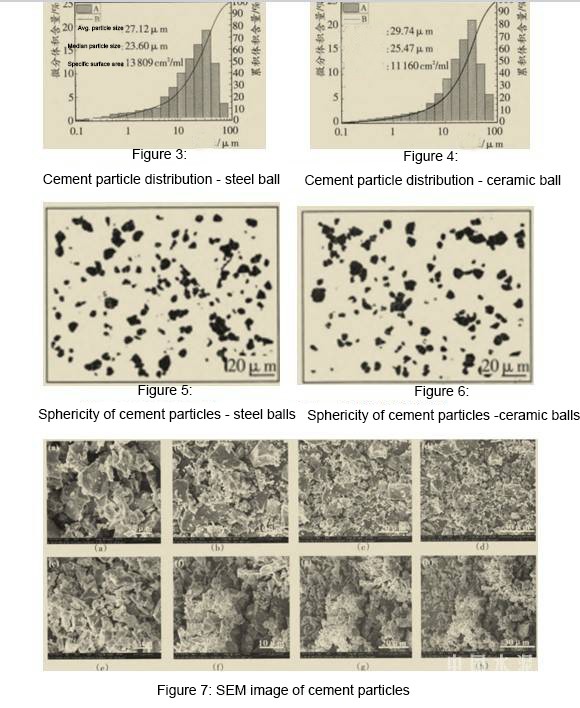
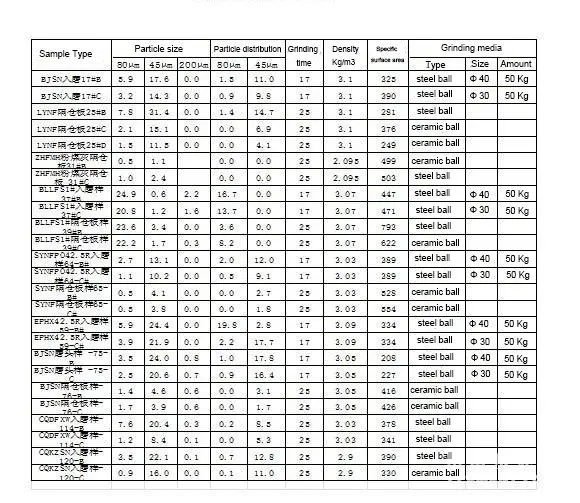
Ceramic grinding media, particularly ceramic balls, are manufactured from advanced materials such as alumina, zirconia, or other composite ceramics. These materials possess unique properties that make them particularly suitable for grinding applications in cement milling:
Lightweight: Ceramic balls are significantly lighter than steel balls, which reduces the load on milling equipment and lowers energy consumption during operation.
High Hardness: With a Mohs hardness rating of 9.0, ceramic balls are extremely hard and durable. This hardness translates into superior wear resistance, enabling them to grind effectively while experiencing minimal wear.
Spherical Shape: The manufacturing process of ceramic balls often results in a more uniform spherical shape, which promotes better flow and reduces friction during the grinding process.
Chemical Inertness: Ceramic materials are chemically stable, which minimizes the risk of contamination in the cement being produced.
The effectiveness of ceramic balls stems from their advanced processing technologies. There are two primary methods used in their production:
Rolling Forming: This technique involves spray drying raw materials to produce finer particles that adhere together. The resulting ceramic balls exhibit lower wear rates; however, they may have lower compressive strength compared to other methods.
Pressing Forming: In this method, hollow granulation powder is compressed to create coarser particles. This results in ceramic balls with higher compressive strength and lower breakage rates, making them more suitable for demanding grinding applications.
The advantages of ceramic grinding media can be categorized into several key areas:
The energy-saving potential of ceramic balls is one of their most compelling attributes. Here’s how they achieve this:
Reduction in Grinding Media Load: Ceramic balls can reduce the total amount of grinding media required by more than 20%, resulting in lower energy consumption. This reduction directly translates to lower electricity costs and enhanced operational efficiency.
Lower Motor Current: The implementation of ceramic balls often leads to a decrease in the main motor current by over 20%. This reduction signifies not only lower operational costs but also less strain on electrical components, contributing to increased longevity.
Overall Energy Savings: The application of ceramic balls can yield savings of more than 15% in energy consumption per ton of cement produced. This equates to a reduction of 3–6 kWh/t of cement, making ceramic balls a financially viable alternative.
Quality is paramount in the cement industry, and ceramic balls help enhance product performance through:
Better Particle Distribution: The use of ceramic balls minimizes the occurrence of over-grinding, resulting in a more desirable particle size distribution. This improvement is critical for producing high-quality cement with consistent performance characteristics.
Spherical Particle Formation: The spherical shape of ceramic balls leads to the production of more spherical particles in the cement. Spherical particles provide better flow characteristics and contribute to the overall strength and compatibility of the final product with other construction materials.
Enhanced Strength and Durability: Cement ground with ceramic balls exhibits improved strength properties. The reduction in the presence of fines allows for better bonding and a higher compressive strength in the final product.
The grinding process generates considerable heat, which can adversely affect both the equipment and the quality of the cement. Ceramic balls help manage these challenges effectively:
Reduced Internal Temperature: The low thermal conductivity of ceramic balls means they generate less heat during grinding. This can lower the internal temperature of the mill by over 15°C, which helps maintain optimal grinding conditions.
Lower Exit Temperature: The reduced heat generation leads to cooler cement exiting the mill, which can positively affect downstream processes such as storage and handling.
Noise Reduction: The use of ceramic balls can decrease mill noise levels by more than 15 dB, contributing to a quieter working environment. This reduction in noise pollution is beneficial for both operational comfort and compliance with regulatory requirements.
Wear resistance is a crucial factor in grinding media performance. Ceramic balls offer several advantages in this area:
Superior Hardness: The high hardness of ceramic balls allows them to withstand significant stress during grinding, resulting in longer service life compared to steel balls. Their wear resistance is approximately 266 times greater than that of high manganese steel.
Lower Wear Rates: Under similar working conditions, ceramic balls consume only 50% of the material that steel balls do. This means that companies can significantly reduce their expenditure on replacement grinding media while enhancing overall operational efficiency.
As environmental sustainability becomes increasingly important in the cement industry, ceramic balls provide a green alternative:
Reduction in Heavy Metal Pollution: Unlike steel balls, ceramic balls do not contain heavy metals such as chromium. This characteristic minimizes heavy metal pollution, helping companies adhere to environmental regulations.
Compliance with Standards: Ceramic balls help cement producers meet national standards regarding soluble hexavalent chromium content in cement products, further supporting their sustainability goals.
The lightweight nature of ceramic balls contributes to lower stress on milling equipment:
Less Impact on Mill Components: By using lighter ceramic balls, the impact and wear on mill liners, partition boards, and activation rings are significantly reduced. This leads to extended service life for these components, translating to lower maintenance costs.
Decreased Load on Motor and Gearbox: The reduced weight of ceramic balls lowers the load on the main motor and gearbox, leading to fewer failures and lower repair costs. This reliability is essential for maintaining consistent production rates.
While there may be slight reductions in production capacity due to the lighter weight of ceramic balls, strategic optimization can mitigate this:
Optimized Grinding Systems: With proper system optimization, it is possible to maintain or even increase production levels. The right combination of ceramic balls with other grinding technologies can lead to enhanced performance without compromising output quality.
The energy-saving mechanism associated with ceramic balls involves several interrelated factors:
Load Reduction: The primary advantage of using ceramic balls lies in their ability to reduce the amount of grinding media without necessitating changes to the ball mill's structure or grinding principles. This reduction lowers the overall load on the grinding system.
Enhanced Grinding Efficiency: The application of ceramic balls rebalances and redistributes the crushing and grinding functions within the cement grinding system. By maximizing the pre-grinding capabilities of the roller press and the grinding functions of the ball mill, ceramic balls optimize the entire grinding process.
Integration with Roller Press-Ball Mill Systems: The combined roller press-ball mill system is particularly suited for ceramic balls. The design allows for a smaller feed fineness, which can adapt to reduced grinding needs while enhancing the shaping functions for coarser particles.
Structural Strength and Efficiency: After implementing ceramic balls, the structural strength and transmission system of the ball mill can accommodate approximately 50% of the grinding media weight. This capability allows for reduced impact force, preserving the grinding functionality of the mill.
Ceramic balls have demonstrated their versatility in various process flows, particularly in dry cement final grinding systems. Their adaptability includes:
Integration in Different Systems: Ceramic balls are suitable for diverse applications, especially in roller press-ball mill systems. They can seamlessly replace steel balls in the grinding chamber of both open and closed circuit flows.
Feed Fineness Control: To maximize the performance of ceramic balls, controlling the feed fineness is crucial. The average particle size of the feed material should be maintained within specified ranges for optimal grinding efficiency.
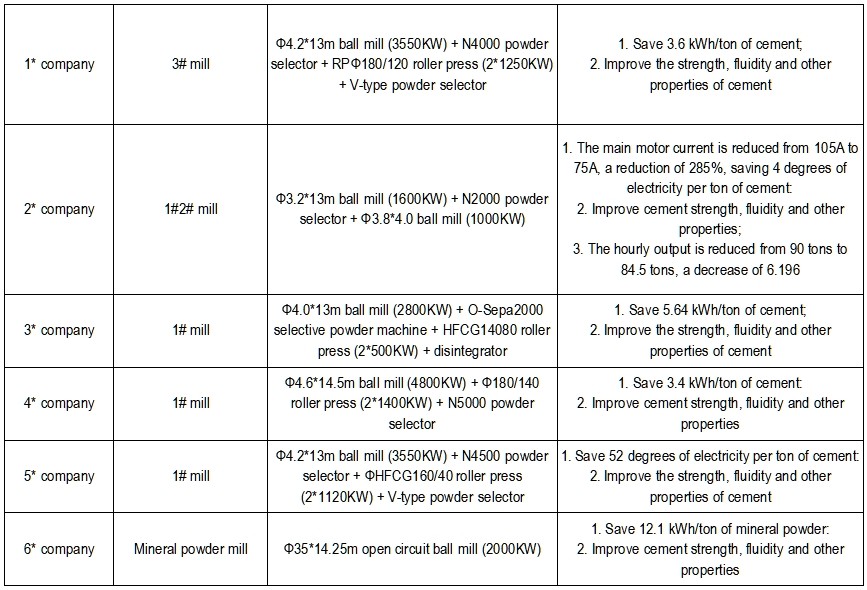
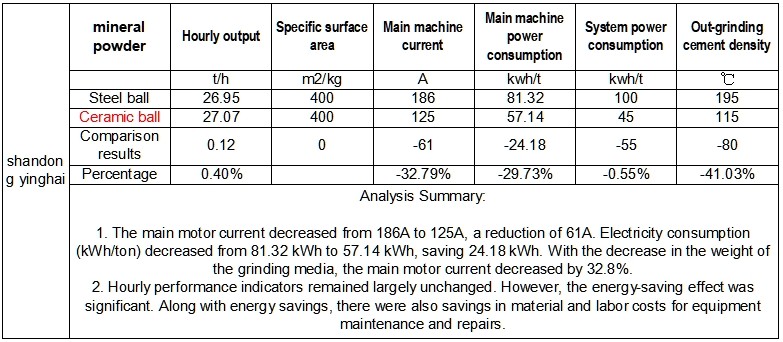
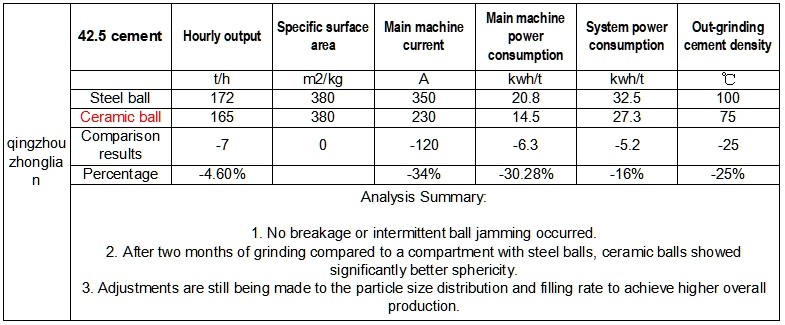
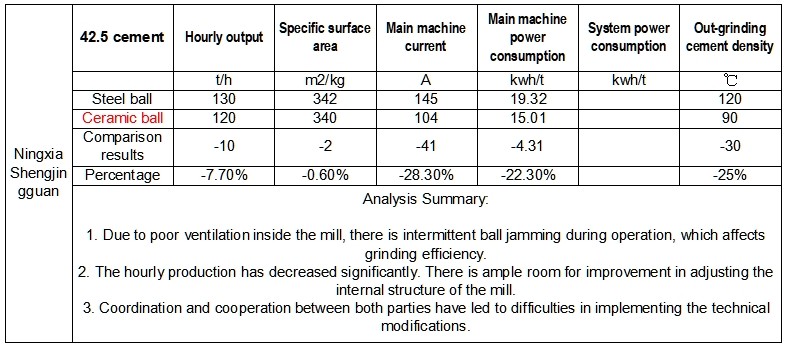
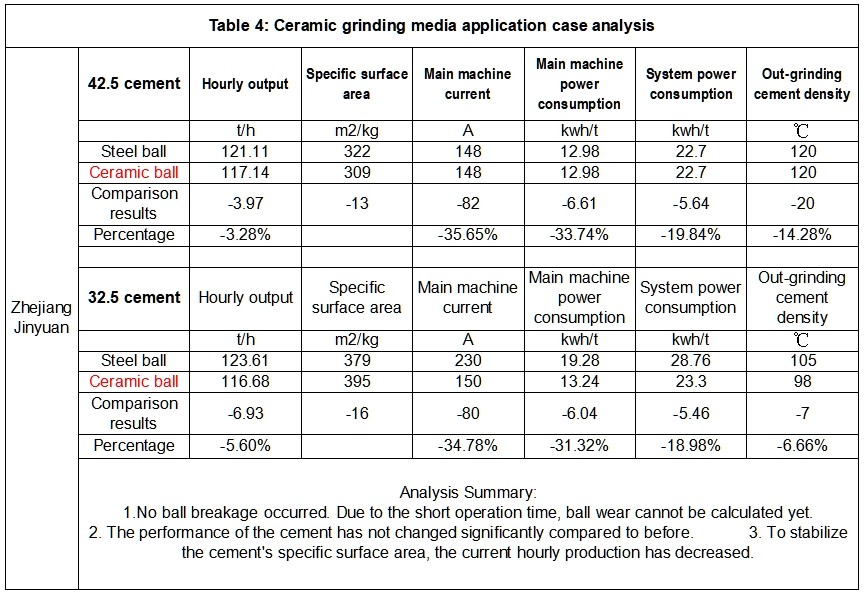
In-depth analysis of small mill experiments has provided valuable insights into the performance of ceramic balls:
Comparison of Ball Diameters: Trials comparing different ball diameters, such as 40 mm and 30 mm steel balls, revealed that smaller ceramic balls produced a superior specific surface area and achieved better fineness optimization.
Particle Size Distribution: The addition of ceramic balls shifted the particle size distribution towards the desired 3–32μm range, demonstrating their ability to enhance product quality.
Real-world applications of ceramic balls in large-scale operations have highlighted their economic benefits:
Energy Savings in Large Mills: In a cement mill with an annual output of 800,000 tons, the replacement of steel balls with ceramic balls yielded energy savings of over 3.2 million kWh per year. This translates to approximately 1.92 million yuan in annual energy cost reductions.
Investment Recovery: The significant cost savings achieved through energy efficiency can often cover the initial investment in ceramic balls within a single year, making them an economically attractive option for cement producers.
As the cement industry evolves, several trends and advancements in grinding media technology are likely to shape future practices:
Increased Adoption of Ceramic Media: As awareness of the benefits of ceramic grinding media spreads, more cement manufacturers will likely transition from traditional steel balls to ceramic options.
Ongoing Research and Development: Continuous research into new materials and processing technologies will enhance the performance of ceramic balls, potentially leading to the development of even more advanced grinding media.
Sustainability Initiatives: As sustainability becomes a central focus for the cement industry, the adoption of eco-friendly grinding media such as ceramics will align with regulatory pressures and market demands.
Integration with Advanced Technologies: The integration of smart technologies and data analytics in cement production processes may enhance the monitoring and optimization of grinding media usage, further maximizing efficiency and quality.
Ceramic grinding media offers numerous advantages over traditional steel balls, including significant energy savings, improved product quality, reduced noise, lower temperatures, and environmental benefits. With their excellent wear resistance and ability to extend equipment life, ceramic balls present a cost-effective solution for cement mills striving to enhance efficiency while minimizing operational costs. As the industry increasingly prioritizes sustainability and efficiency, the use of ceramic balls in ball mills is set to rise, paving the way for environmentally responsible and economically sound cement production.
In summary, the transition from steel balls to ceramic grinding media represents a significant opportunity for the cement industry to address current challenges in energy consumption, product quality, and environmental sustainability. By adopting ceramic balls, manufacturers can realize substantial cost savings while simultaneously improving the efficiency and reliability of their grinding processes. As technology continues to evolve, the potential for ceramic grinding media to shape the future of cement production is both promising and transformative.

Submit your demand,
we will contact you ASAP.

Sanxin New Materials Co., Ltd. focus on producing and selling ceramic beads and parts such as grinding media, blasting beads, bearing ball, structure part, ceramic wear-resistant liners, Nanoparticles Nano Powder

